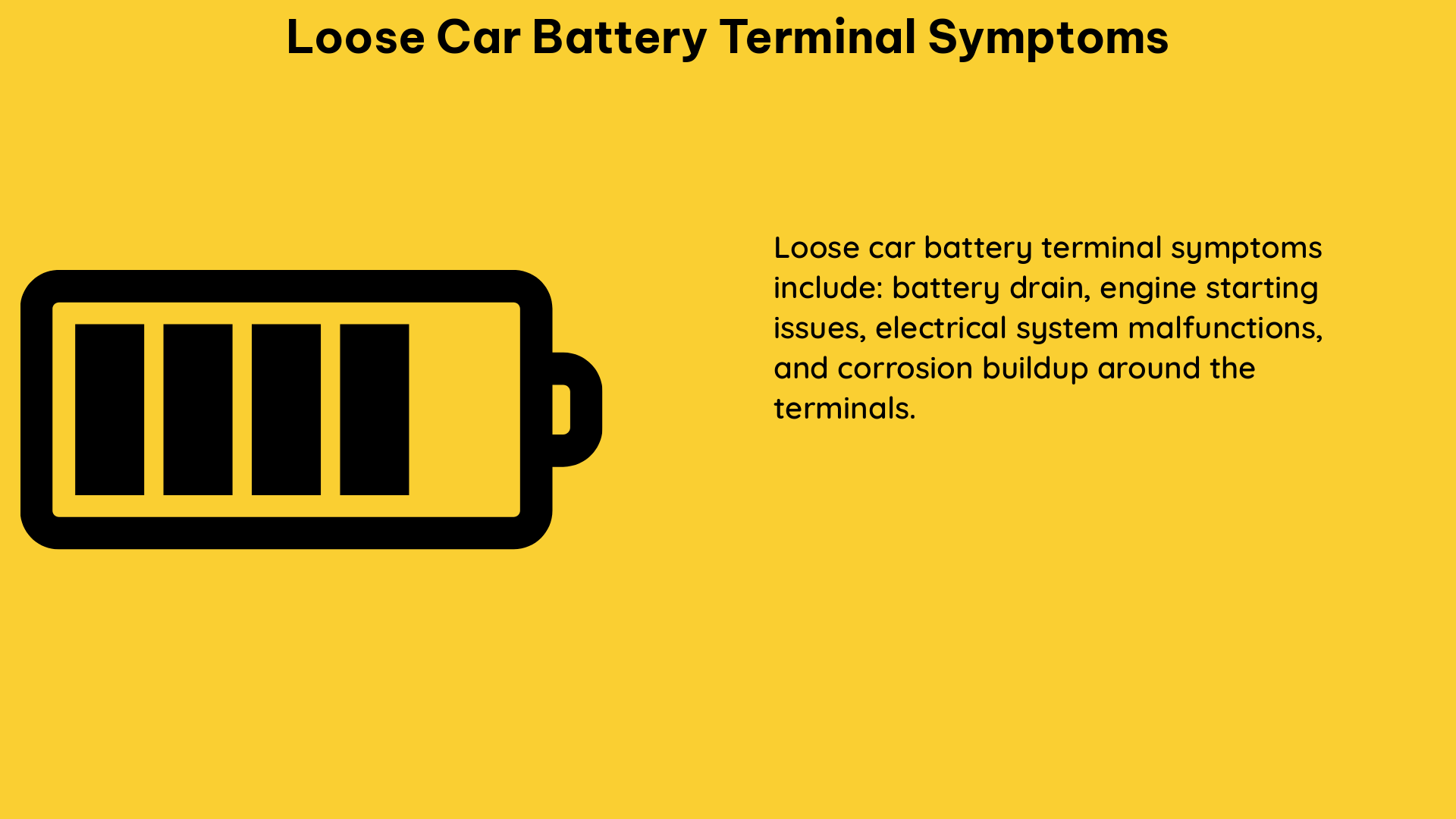Loose car battery terminal symptoms can be quantified by measuring the voltage drop across the battery terminals, the resistance of the battery cables, and the current flow to the starter motor. These symptoms can indicate a problem with the battery connection, which can impact the overall electrical system and engine performance.
Voltage Drop Across Battery Terminals
One of the primary symptoms of a loose car battery terminal is a voltage drop across the terminals. This can be measured using a multimeter by comparing the voltage at the battery terminal to the voltage at the starter motor terminal. A loose terminal can cause a voltage drop of up to 0.5 volts, which can result in a decrease in the available cranking amps to the starter motor.
To measure the voltage drop, follow these steps:
- Set your multimeter to the DC voltage setting.
- Connect the positive (red) lead of the multimeter to the positive battery terminal.
- Connect the negative (black) lead of the multimeter to the starter motor terminal.
- Start the engine and observe the voltage reading. A voltage drop of more than 0.5 volts indicates a loose or faulty battery terminal.
Resistance of Battery Cables

Another symptom of a loose car battery terminal is an increase in the resistance of the battery cables. This can also be measured using a multimeter by checking the resistance between the battery terminal and the starter motor terminal.
To measure the resistance, follow these steps:
- Set your multimeter to the resistance (Ω) setting.
- Connect the positive (red) lead of the multimeter to the positive battery terminal.
- Connect the negative (black) lead of the multimeter to the starter motor terminal.
- Observe the resistance reading. A resistance value higher than the manufacturer’s specification (typically around 0.5 Ω) indicates a loose or corroded battery terminal.
Current Flow to Starter Motor
The current flow to the starter motor can also be affected by a loose car battery terminal. This can be measured using an ammeter by checking the current draw of the starter motor.
To measure the current flow, follow these steps:
- Set your ammeter to the appropriate current range.
- Disconnect the positive battery cable from the battery terminal.
- Connect the ammeter in series between the positive battery terminal and the positive battery cable.
- Start the engine and observe the current reading. A decrease in current flow compared to the manufacturer’s specification (typically around 200-300 amps) indicates a loose or faulty battery terminal.
Other Symptoms
In addition to the measurable symptoms, a loose car battery terminal can also cause the following issues:
- Flickering headlights or electronics
- A hot ground wire cable
- Difficulty starting the engine
These symptoms can be caused by fluctuations in current flow due to a loose or faulty terminal end, which can impact the functionality of electrical components in the vehicle.
Diagnosing and Fixing a Loose Battery Terminal
To diagnose a loose car battery terminal, start with a visual inspection of the terminal ends and battery cables. Look for signs of corrosion, damage, or loose connections. The terminal ends should be tightened to the recommended torque specification, typically around 8-10 ft-lbs, using a torque wrench. The battery cables should also be inspected for damage or corrosion, and replaced if necessary.
If the symptoms persist after tightening the terminal ends, you may need to clean the battery terminals and cable connections to remove any corrosion. Use a wire brush or battery terminal cleaner to remove any buildup, and then apply a thin layer of dielectric grease to the terminals to prevent future corrosion.
In some cases, a loose or damaged battery terminal may require replacement of the entire battery or battery tray assembly. This is especially true if the terminal is severely corroded or the battery tray is damaged, as these components are critical to maintaining a secure and reliable electrical connection.
Conclusion
Loose car battery terminal symptoms can have a significant impact on the overall electrical system and engine performance of your vehicle. By understanding the symptoms, measuring the voltage drop, resistance, and current flow, and properly diagnosing and fixing the issue, you can ensure your vehicle’s electrical system is functioning at its best.
Reference:
- How to Tighten Battery Terminals
- Battery Terminal Torque Specifications
- How to Clean Battery Terminals

The lambdageeks.com Core SME Team is a group of experienced subject matter experts from diverse scientific and technical fields including Physics, Chemistry, Technology,Electronics & Electrical Engineering, Automotive, Mechanical Engineering. Our team collaborates to create high-quality, well-researched articles on a wide range of science and technology topics for the lambdageeks.com website.
All Our Senior SME are having more than 7 Years of experience in the respective fields . They are either Working Industry Professionals or assocaited With different Universities. Refer Our Authors Page to get to know About our Core SMEs.